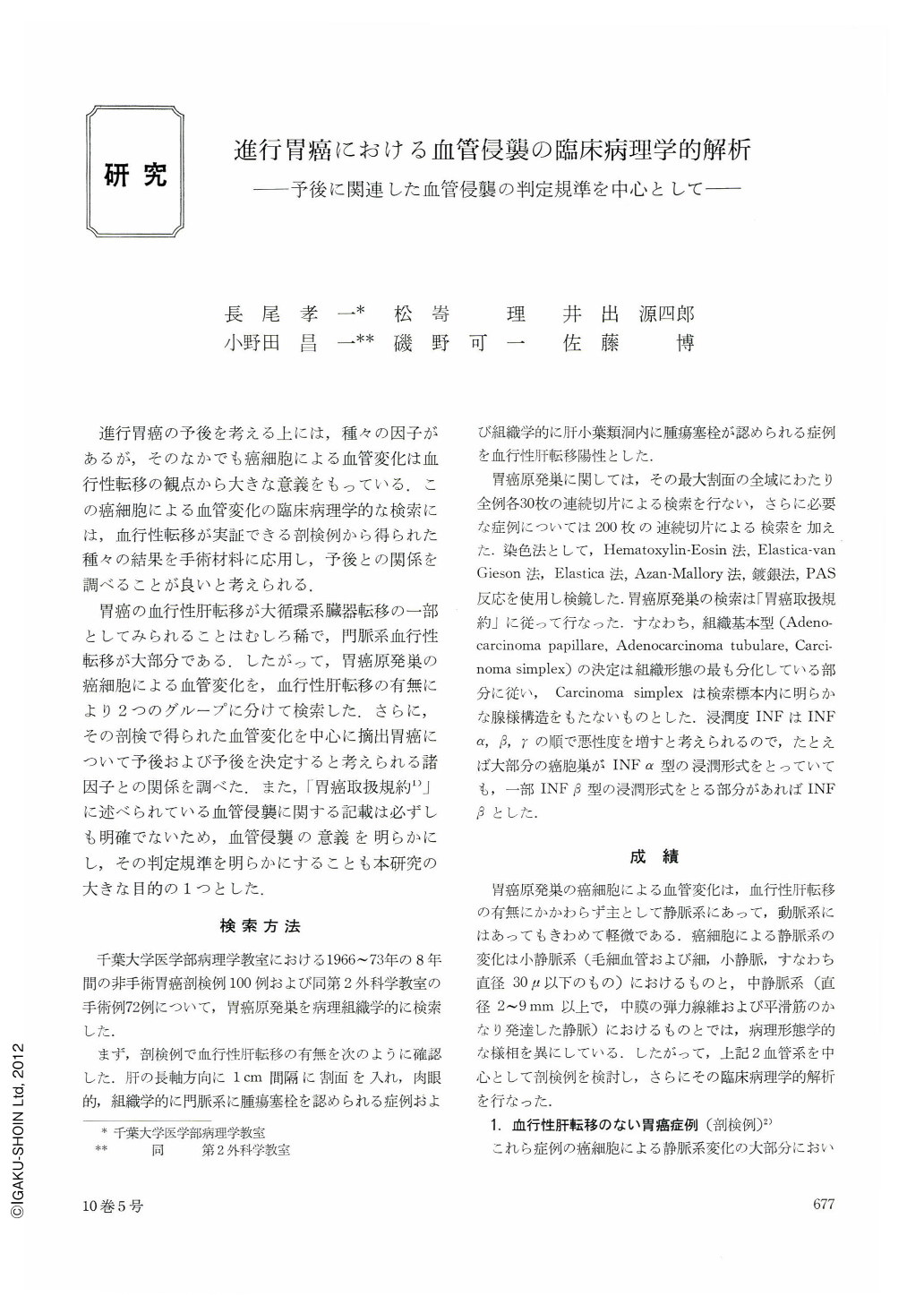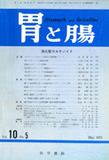Japanese
English
- 有料閲覧
- Abstract 文献概要
- 1ページ目 Look Inside
進行胃癌の予後を考える上には,種々の因子があるが,そのなかでも癌細胞による血管変化は血行性転移の観点から大きな意義をもっている.この癌細胞による血管変化の臨床病理学的な検索には,血行性転移が実証できる剖検例から得られた種々の結果を手術材料に応用し,予後との関係を調べることが良いと考えられる.
胃癌の血行性肝転移が大循環系臓器転移の一部としてみられることはむしろ稀で,門脈系血行性転移が大部分である.したがって,胃癌原発巣の癌細胞による血管変化を,血行性肝転移の有無により2つのグループに分けて検索した.さらに,その剖検で得られた血管変化を中心に摘出胃癌について予後および予後を決定すると考えられる諸因子との関係を調べた.また,「胃癌取扱規約」に述べられている血管侵襲に関する記載は必ずしも明確でないため,血管侵襲の意義を明らかにし,その判定規準を明らかにすることも本研究の大きな目的の1つとした.
Changes in the venous system involved in primary foci of gastric cancer have been investigated using autopsy materials. These are divided into two groups: with or without hematogenous hepatic metastases. Tumor cell emboli (type A) occur following cancerous erosion of the endothelium in the vein system. By contrast, in the group without hepatic metastases, vascular obstruction due to tumor cell invasion is seen which is either caused by compression of tumor cell in the venules (compressive obstruction; type B) or by subendothelial invasion in the medium-sized veins (pseudoemboli of tumor cells; type C).
Seventy two surgical materials of gastric cancer are then examined based on these findings; Type A changes are frequently observed (85.7%) in cases with poor prognosis dying within 3 years, whereas type B changes are mostly seen in those cases with a long-survival rate of over 10 years and type C is seen in 73.3 percent of those cases with a relatively long-survival rate ranging from 5 to 10 years.
From these findings, it is concluded that type A changes including cancerous erosion and tumor cell emboli should solely be diagnosed as positive findings of vascular invasion in gastric cancer, whereas both type B and C changes should not be done so.
The significance of the present results has been emphasized from the fact that these can be closely related to other factors such as INF classification and lymph node involvements that influeuce prognosis of gastric cancer.

Copyright © 1975, Igaku-Shoin Ltd. All rights reserved.


